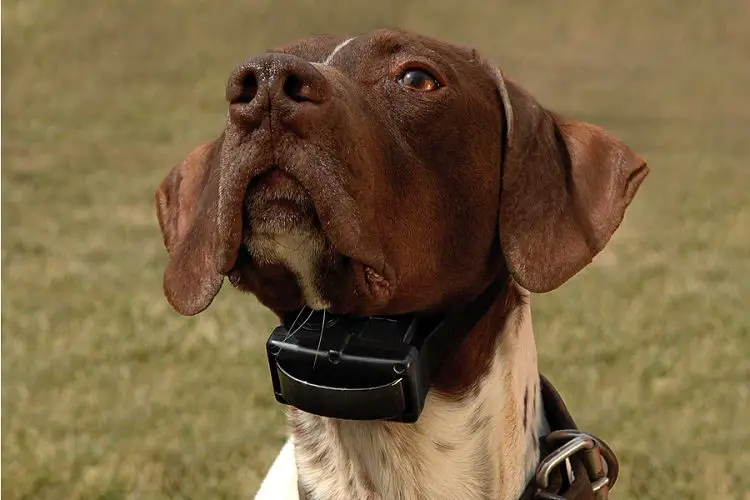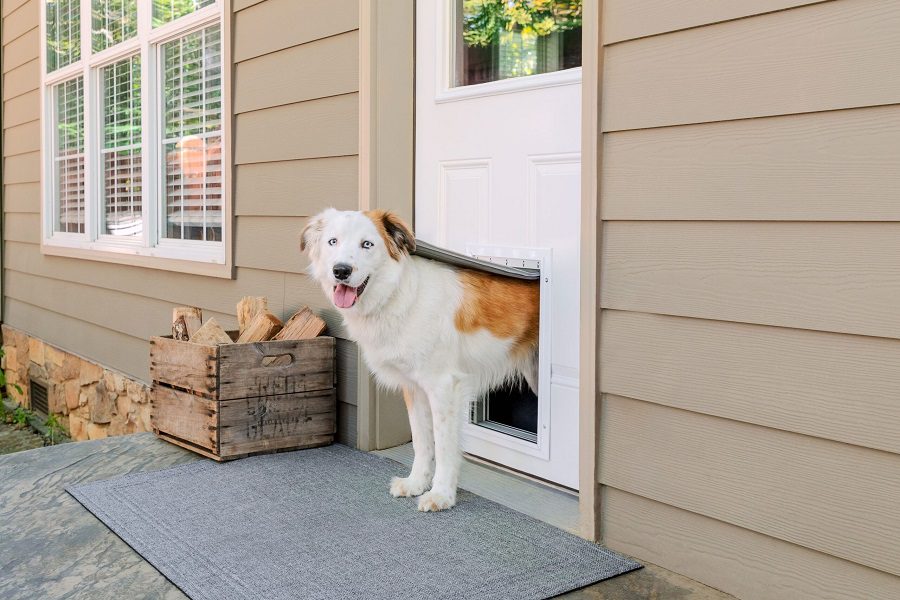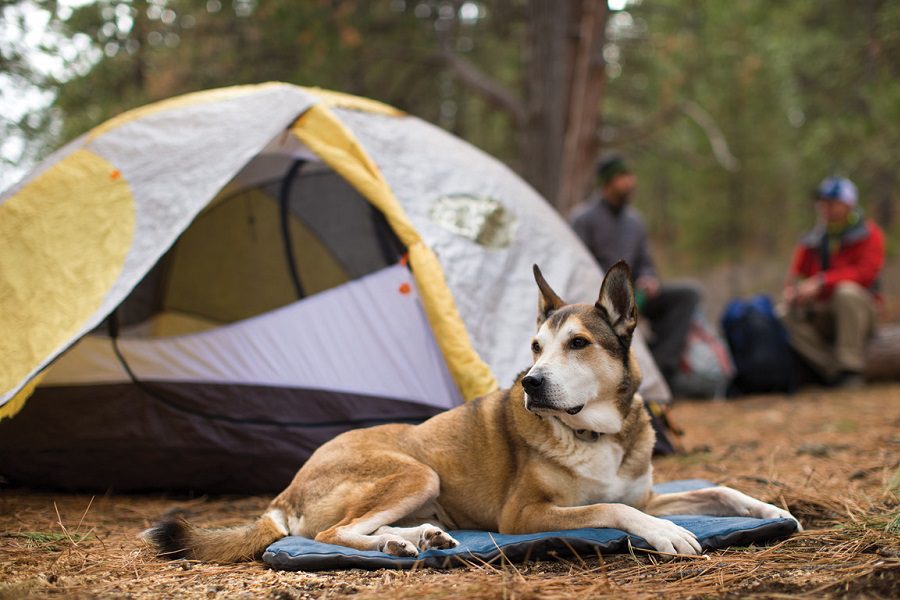Last Updated: 2 years ago
Our furry friends are always barking their way in and out of trouble, and this is just one of the ways in which dogs communicate vocally with humans, besides sounds like howling, whining and growling.
While barking serves several purposes for dogs, it can become a serious problem if, for instance, a dog is barking compulsively through the night.
Distracting your dog with play, rewarding them for good behavior, or training them with the help of bark collars, are effective ways of dealing with this kind of behavior.
Whether it’s to sound a fierce alarm, to communicate with another animal, or a happy, short bark to welcome you back home, there is a range of reasons dogs make this characteristic noise that is sure to make you sit up and pay attention.
Not to forget – sometimes dogs bark just for the sake of barking; more often than not, it is any combination of these factors and their variations.
As each dog is different, it is of utmost importance that you get to the bottom of why exactly your dog is barking, before you look into disciplinary measures or training devices such as dog collars. The sooner you get to the core of the issue, the quicker it can be resolved.
The inherent alertness and devoted loyalty of dogs are why they are so well-adored, and the barking of a dog has long served as an alarm to humankind, to warn us of an imminent threat or an intruder.
Why Do Dogs Bark?

Here are some of the main reasons why dogs bark:
In Greeting
This is how dogs say hello – a happy bark, a wagging tail, and maybe some enthusiastic jumping, to welcome people or other animals they are glad to see. This is a scenario most dog owners are all too familiar with, and incredibly fond of.
Dogs can bark when they want to instigate play, or when they are playing, as well. The funny thing about barking is that it seems to be contagious amongst dogs – you have probably noticed it yourself.
When one dog starts barking in a neighborhood, it slowly spreads down the street until all the dogs are barking in unison like there is no tomorrow.
Seeking Your Attention
This is more your day-to-day kind of barking; dogs bark to draw your attention to the fact that they want to go for a walk, want a treat, or want to play.
As very affectionate animals, barking is just one of the ways they can seek out your attention.
Territorial Barking
There’s no mistaking it – the body language of a dog who is barking in a protective or territorial way is acutely different from a friendly dog barking.
When an “intruder”, or any person unknown to the dog, enters what he or she considers his or her territory, the dog perceives this intruder as a threat.
The dog will bark loudly, incessantly and aggressively until the threat seems to abate. You would be surprised at the fierceness of the tireless barking of some of the most adorable dogs you have met when they sense approaching danger.
Barking Out Of Fear
Whether it’s because they are surprised, scared, or startled, dogs often have a way of barking in reaction to fear or any unknown stimuli in their surroundings.
Barking Out Of Boredom
As we know, dogs are “pack” animals and need a lot of socialization and interaction with other animals in order to stay happy and healthy.
When left by themselves for long periods, they often become lonely and bored and bark out of unhappiness.
Barking Compulsively Out Of Insecurity Or Separation Anxiety
Puppies often bark out of insecurity, especially if they are separated from the litter at a very young age.
Dogs with separation anxiety usually have a few markers that can help you identify them with – besides compulsive barking, there might also be hyperactivity, defecating in inappropriate places, frantic pacing and depression.
Dogs that bark compulsively might also make repeated movements, like running along a fence or parapet, or in circles.
How To Deal With Your Dog’s Non-Stop Barking

So what do you do when it’s four in the morning, and your furball won’t stop their incessant barking?
Don’t Shout Back
Shouting back at your dog is the most counter-productive thing you can do in this situation because he is just going to be delighted and think you’re joining the cacophony. So keep your voice composed and calm, and instruct him to be quiet, instead.
Start Training Them Young
Train your dog to understand and answer to basic commands such as “quiet”, “sit” and “come here” at a young age, so that you can spend most of your time enjoying each other’s company, instead of trying to out-bark each other.
Remember: the longer you let a habit form, the more ingrained it gets.
Treat Your Dog For Good Behavior
Every time your dog stops barking, or follows any command you give him, give him a treat as a reward.
In time, he will come to associate this behavior with the reward, as dogs are much more responsive to physical signals rather than verbal ones; it will soon become easier to instruct him in all the different ways to be “a good boy”.
Distract Your Dog
By tossing a toy or treat his way, you can distract your dog from whatever seems to be the focus of his loud barking.
Dogs get an adrenaline rush from barking, so the longer it goes on, the more aggressively it can escalate – you need to break this habit while you can still control the dog.
Tiring out your dog with exercise and play is the best way to distract him or her, so they are simply too tired and less likely to engage in excessive barking.
Bark Collars
Bark collars can serve as a gentle but firm deterrent to your dog’s incessant barking by training them with the use of correctional stimuli which are behaviorally activated.
An Introduction To Bark Collars

A bark collar is a way in which you can train your dog when to bark, and when not to bark, through stimuli that are effective in the correction of nuisance barking.
Through either static, spray, ultrasonic or vibration stimulation whenever the dog wearing the collar barks, you will find that your dog learns very quickly when to set the whole street barking, and when to quieten down.
The only difference among the different types of dog collars is the stimuli they use to train the dog.
Bark collars qualify as an automatic bark control unit, as you are able to control excessive barking that takes place in your absence, or if it occurs in an unexpected location. Fitted correctly, any of these collars should fit snugly around your dog’s neck.
A pet-friendly way to curb incessant barking, bark collars or bark-control collars come in a range of options, so you can pick what works best for your pup. Before you start trying to curb excessive barking, though, it is important to identify exactly why your dog is barking.
Uses Of A Bark Collar
Controlling Barking
Bark control deterrents, like a bark collar, help to control incessant barking with a form of stimulation that is as effective as it is humane.
Barking is completely normal, but it is when it becomes a nuisance and starts affecting day-to-day activities, that it becomes a problem.
Behavior Modification
Picking up on sound or vibrations from the vocal cords of the dog, depending on the brand, dog collars deliver the stimuli based on the dog’s behavior.
By associating barking with the correctional stimuli, using behaviorally-activated dog collars is one of the faster ways of teaching a dog when to bark, and not bark.
It also helps in behavior modification by resolving issues such as food aggression.
Containment
Outdoor dogs may get extremely restless, frustrated, or bored if left alone at home and as a result, start barking incessantly. With the use of a bark collar, an invisible fence or boundary is created, as such, with the wires laid by the boundaries of the property underground.
With the help of the device, your dog is now free to frolic in the outdoors, without you having to worry about him or her wandering too far away.
Types Of Bark Collars
There are four main types of automatic bark collars that detect vibrations from your dog’s vocal cords every time he or she barks, and release a bark deterrent in response.
It’s perfectly natural, as animal lovers, to think about the effects of these collars that inhibit barking on the dogs and their physiological functions.
Bark collars delivering a shock as stimuli are illegal in Europe, with studies showing that the electric current from the shock collars can end up in aggression, stress, or constant anxiety.
Technology has made it possible today to ensure that there is a way to train dogs and curb loud, incessant barking in a secure and humane way, thankfully.
Here are the different types of bark collars that can successfully do this without hurting a dog:
Ultrasonic Bark Collars
An ultrasonic sound is set off each time your dog barks, a stimulus that makes dogs quiet down and trains them to learn quickly in response to it.
Since the sound emitted by ultrasonic bark collars is very high-pitched, it is out of the audible range for humans, but can be heard by dogs.
Many dog owners have reported that their dogs cut down on excessive barking in a matter of days.
Static Bark Collars
Another type of bark collar is the static bark collar, which delivers a humane static correction stimulation, which feels just like what you would get during an acupuncture treatment, to the dog to help curb excessive barking.
Spray Bark Collars (Citronella)
A spray bark collar is another device that uses physical stimuli for behavior correctional purposes in dogs.
Every time the dog barks, he gets a safe hypo-allergenic non-toxic citrus spray correction from his collar, that teaches him quickly to cut down on the noise levels.
Vibration Bark Collars
Lastly, the vibration bark collars use the physical stimuli of vibrations to train the dog when not to bark, in a humane and effective manner.
How Do Bark Collars Work
Bark collars are activated on the basis of the dog’s behavior.
When a dog barks, the collar picks up on the vibrations in the dog’s vocal cords and delivers a stimulus, that is either physical such as static, vibrations or sprays, or ultrasonic sounds, which are outside of the human audible range, but which dogs can hear.
Over time, the dog comes to associate this stimulus in response to barking and understands what sets it off. Many dog owners have reported their dogs responding to the bark collars within a matter of days, amazed at the speed with which they caught on.
It is best if an experienced dog owner or a professional vet fits your dog with a dog collar for safety. Similar to a normal nylon dog collar, bark collars also have a nylon collar, at the front of which is a mechanism that lays right against your dog’s throat.
This picks up on vibrations from his or her vocal cords and releases the bark-deterring stimulation accordingly so that there is a considerable reduction in nuisance barking.
In the case of spray collars, a burst of citrus is delivered to the dog, whereas the ultrasonic one emits high-frequency sounds that are outside of the human audible range, but which dogs can hear. There are also collars that use static as stimuli to train the dog.
As soon as you see that the dog has been barking less for no reason, it is safe to say that he has learned his lesson well, and to remove the dog collar.
When carried out under the guidance of a professional, with due attention paid to the ethics of the training methods and the surrounding environment, this can be one of the most effective ways of correcting unwanted or unsafe behavior in dogs.
How To Go About Choosing A Dog Collar
As each dog is unique, choosing a bark collar that is well-suited to your dog is of utmost importance.
It’s good to know your dog as well as your bark collar options thoroughly, before picking a model of bark collar and approaching a professional veterinarian to discuss the details. They should help you fix it on your dog securely so that there are no further issues.
There is really no formula to get this right without doing your homework; taking an informed decision is the way to go.
The importance of knowing your dog and his habits well cannot be emphasized enough, as one size does not fit all. Having tried some traditional disciplinary measures before using a collar to train them, would be an added bonus.
A valid concern of any animal lover would be regarding how safe the stimuli are. Obviously, the dog does not enjoy the sensations of static or sprays, and this has raised questions about how humane the use of bark-deterrent dog collars really is.
How Safe Are Bark Collars?

Bark collars are safe, but they have been shown to have different effects on different dogs. Some dogs have been found to be much more sensitive to one or the other form of stimuli in these collars.
While some dogs may respond wildly to certain stimuli, they could be wholly unaffected by another.
Dogs also have a natural tendency to disguise their scent, so the spray collars might not necessarily be right for every dog, setting them rolling every time they sense the spray near the throats to disguise the smell.
The fact remains that none of the stimuli is particularly something that the dog enjoys or likes – and he or she is not supposed to. If it did not irk them, the nuisance barking would not stop.
Dog collars have been refined with the advent of technology to create products that are as pet-friendly as possible while ensuring that no harm comes to the dog.
Besides the various forms of stimuli, the other variations in models of bark control solutions include automatic collars and handheld devices.
When it comes to bark collars, it is important to note, though, that no severe injuries or deaths have been caused by them, and the most beneficial aspect of bark collars is the short duration of time – in some cases, just a few days – in which you can effect such a level of change in your dog’s barking.
Most crucially influencing how a bark collar for dogs would affect them, is the trainer’s attitude and the surroundings in which the collar is used. Every last detail of how you go about training your dog is really what will define how successful the whole process will turn out to be.
As long as you review your options thoroughly with your vet and ask for help from a professional whenever required, training your dog with a bark collar should not be a problem.
It is useful to have one professional you trust on standby, in case you need some advice or have a query.
With alert and compassionate training, your dog should understand the objective of the exercise fairly quickly. Your furball friend and you can then be one step closer to a calmer home with more moments of precious quiet.
Take The Ruff With The Smooth

Raising and training a puppy requires a lot of hard work, dedication, and – most importantly – love and affection for the dog. An owner grows with the dog in their own way, and this is indeed an incredibly special bond.
Dogs bark for a range of reasons, and before you begin training your dog to curb their incessant barking, you have to ensure that you zero in on the actual reason for the barking. You can go through some of the general reasons that your dog might be barking non-stop, and see what fits the bill.
Is he or she barking out of fear, loneliness or boredom? Does the dog get enough socialization in a day?
As pack animals, dogs are the happiest in good company – or any company, really. Does your dog have separation anxiety or persisting insecurity, that causes constant barking? Or does he or she just want your attention?
This process of eliminating the options helps to nip the issue in the bud, so the core issue does not escalate as your puppy grows. Make sure you don’t shout back at them for nuisance barking, but treat them for good behavior and start training them young, as this is when habits are inculcated.
Training a dog from a young age is very important, as this is when most habits are created.
With the appropriate use of a quality, bark-deterring dog collar, with the guidance of a professional or experienced dog owner who can help you securely fasten it onto your dog, you should be able to train the dog to contribute to a much quieter and calmer home, in a very short amount of time.
Resources:



